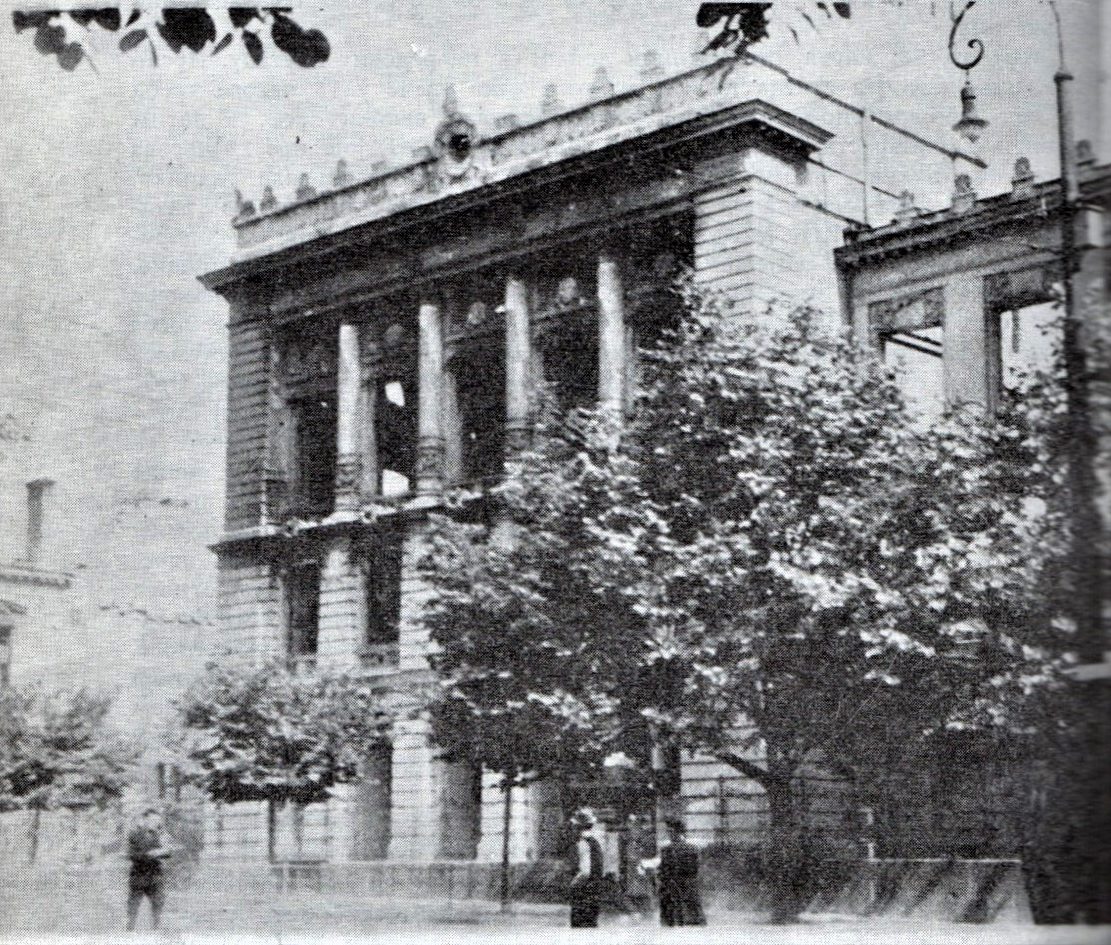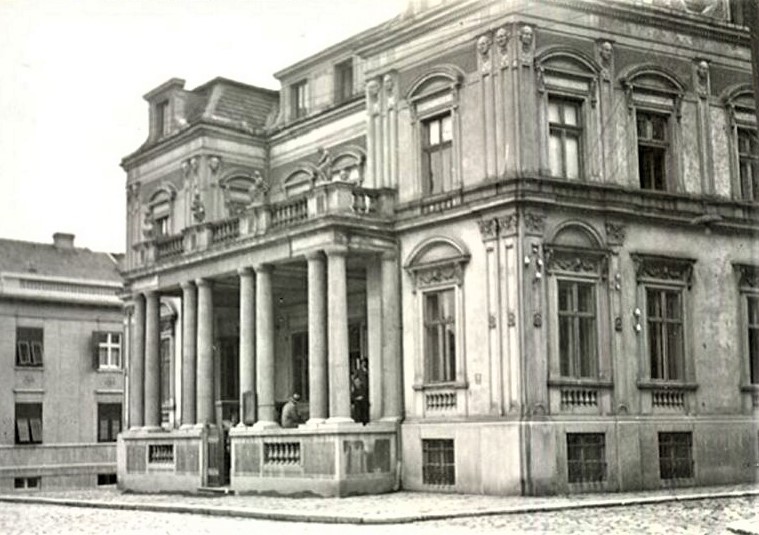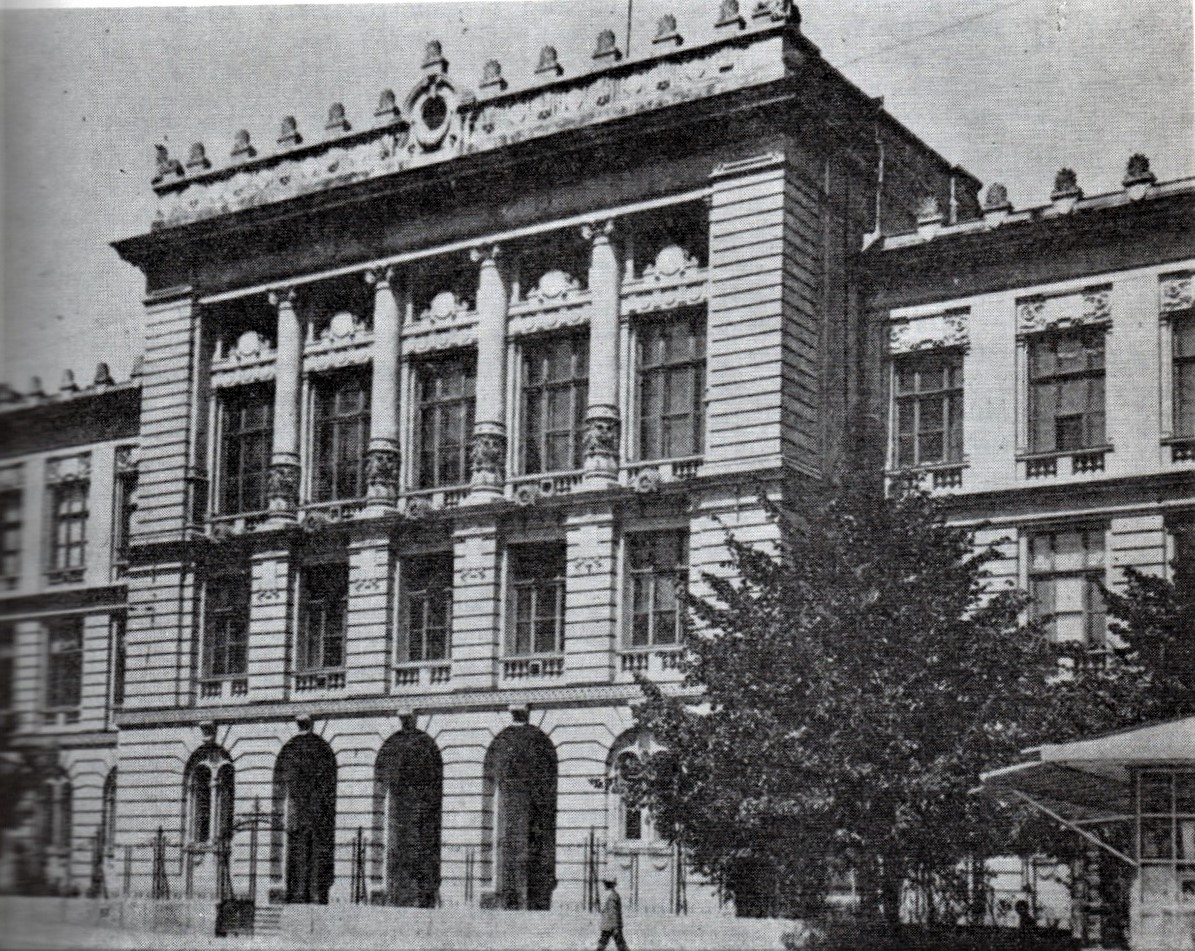On Sunday morning, April 6, 1941, Nazi Germany began bombing Belgrade, which began the invasion of the Kingdom of Yugoslavia. The city was bombed in four raids on April 6, and again on April 7, 11, and 12, 1941. About 2,500 people died, and hundreds of buildings were demolished and destroyed. The bombing came in response to demonstrations held nine days earlier, on March 27, against joining the Triple Pact and rejecting the alliance with Germany. After 11 days, the army of the Kingdom of Yugoslavia capitulated, and Serbia and Belgrade were occupied by Nazi Germany.
During the April bombing, 627 buildings were destroyed, and over 8,000 buildings were damaged (including a portion of the Old Palace building). The Church of the Ascension and numerous other institutions were badly damaged, among them the II Belgrade High School building on the site of today's Politika newspaper building. The most important cultural monument, the National Library with 350,000 books, was destroyed on the first day of the bombing.
National Library
The National Library of Serbia was founded during the reign of Prince Miloš in 1832 in the bookstore of Gligorije Vozarović. It was him who ordered that one copy of each printed book should be given to the library.
The National Library of Serbia moved into the building on Kosančićev venac in 1925, using the space in the former paper and cardboard factory of Milan Vapa, an industrialist and philanthropist. When Vapa sold the building to the Kingdom of SHS in 1921, the building was adapted for the needs of the library. The building was designed by architect Branko Tanazević in the style of academicism.
The building of the National Library on Kosančićevo venac (demolished) Photo collection of the Museum of the City of Belgrade
The library building was hit on April 6, 1941 during the German bombing of Belgrade, and a large part of the book collection was destroyed along with Inventories and catalogues, a collection of over 1,000 manuscripts and charters from the 12th to the 17th century. The entire correspondence of cultural and political history of Serbia and Yugoslavia was also destoyed.
The new building of the National Library in Vračar was built in 1973. The building was designed by architect Ivo Kurtović.
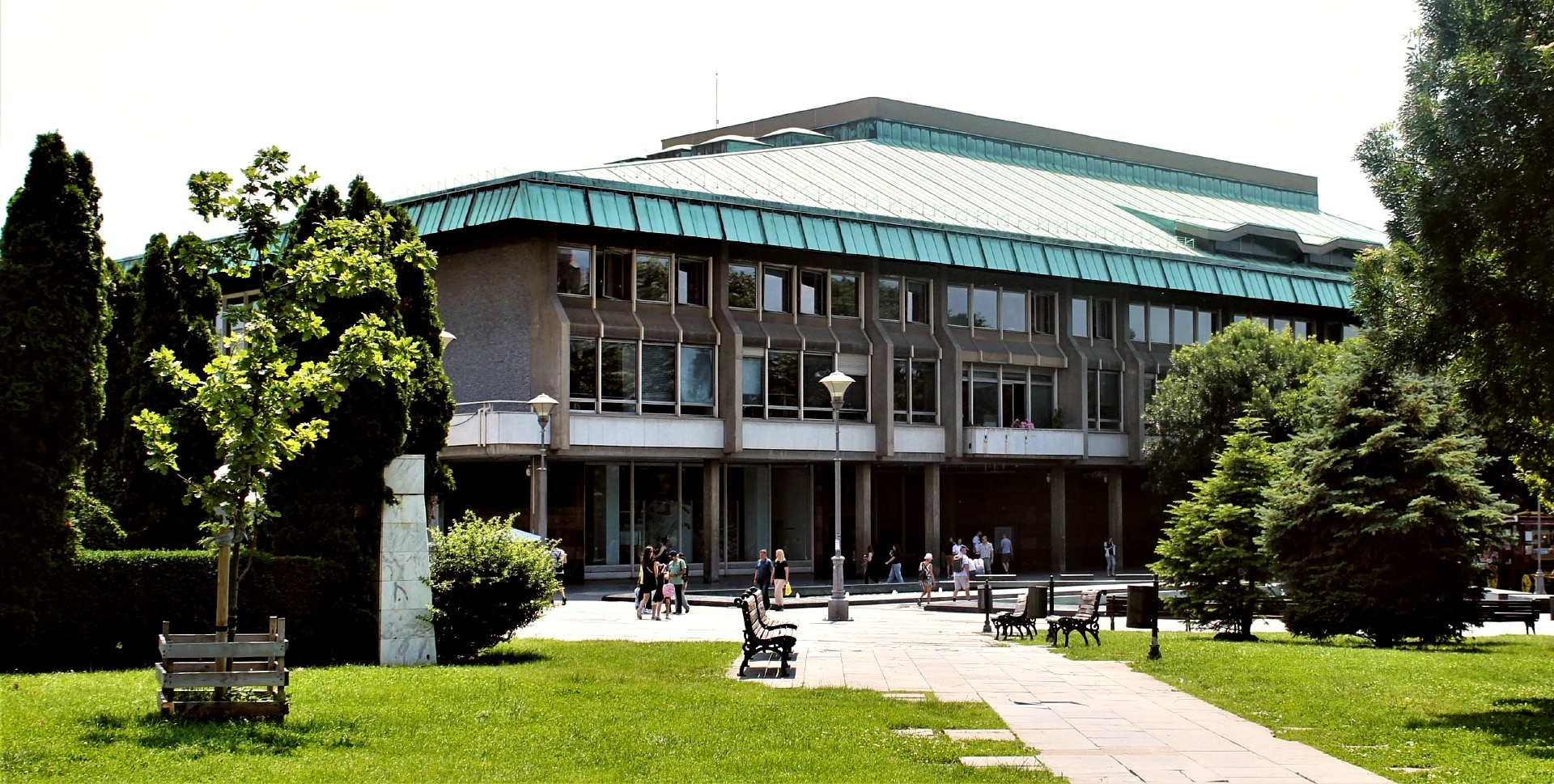

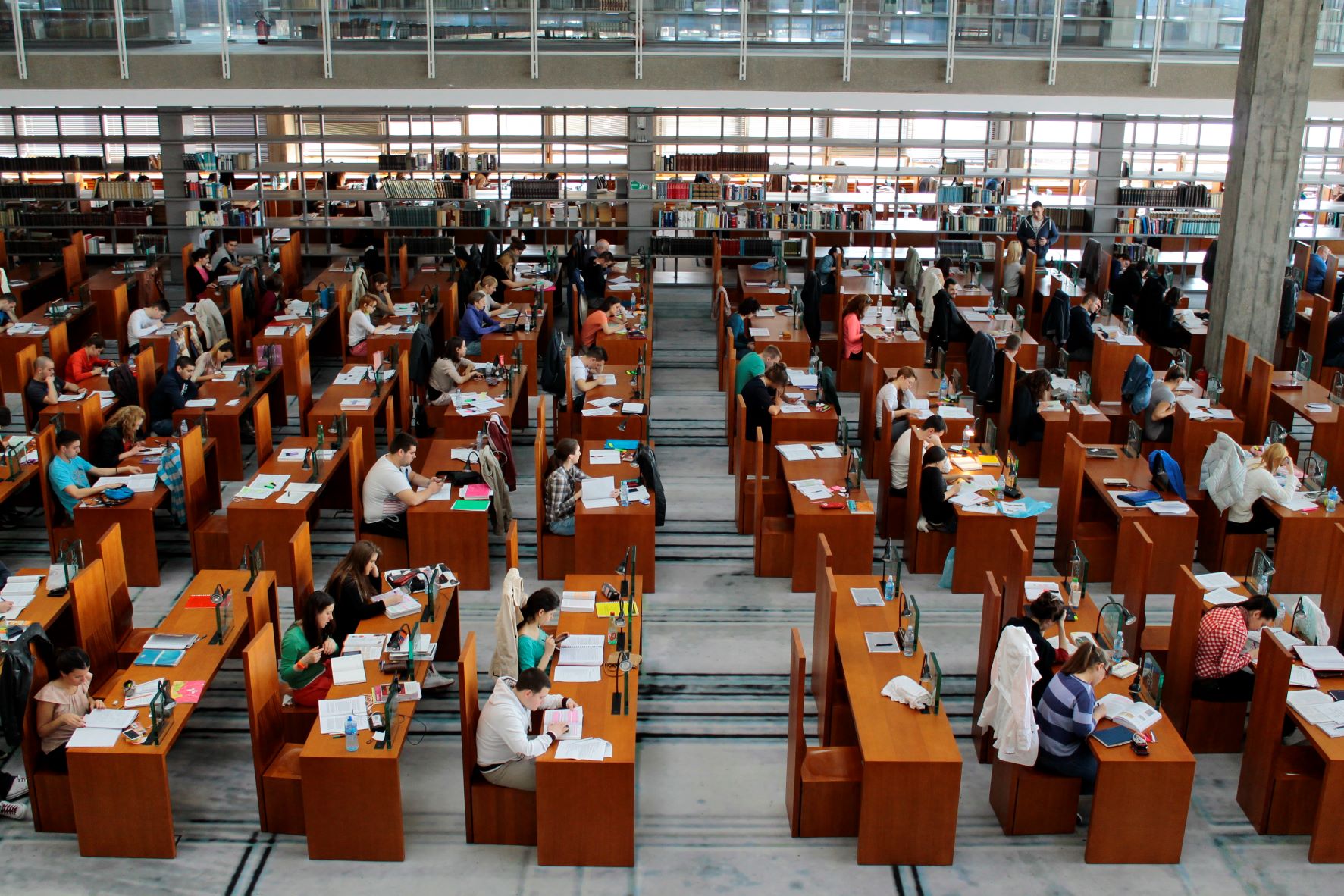
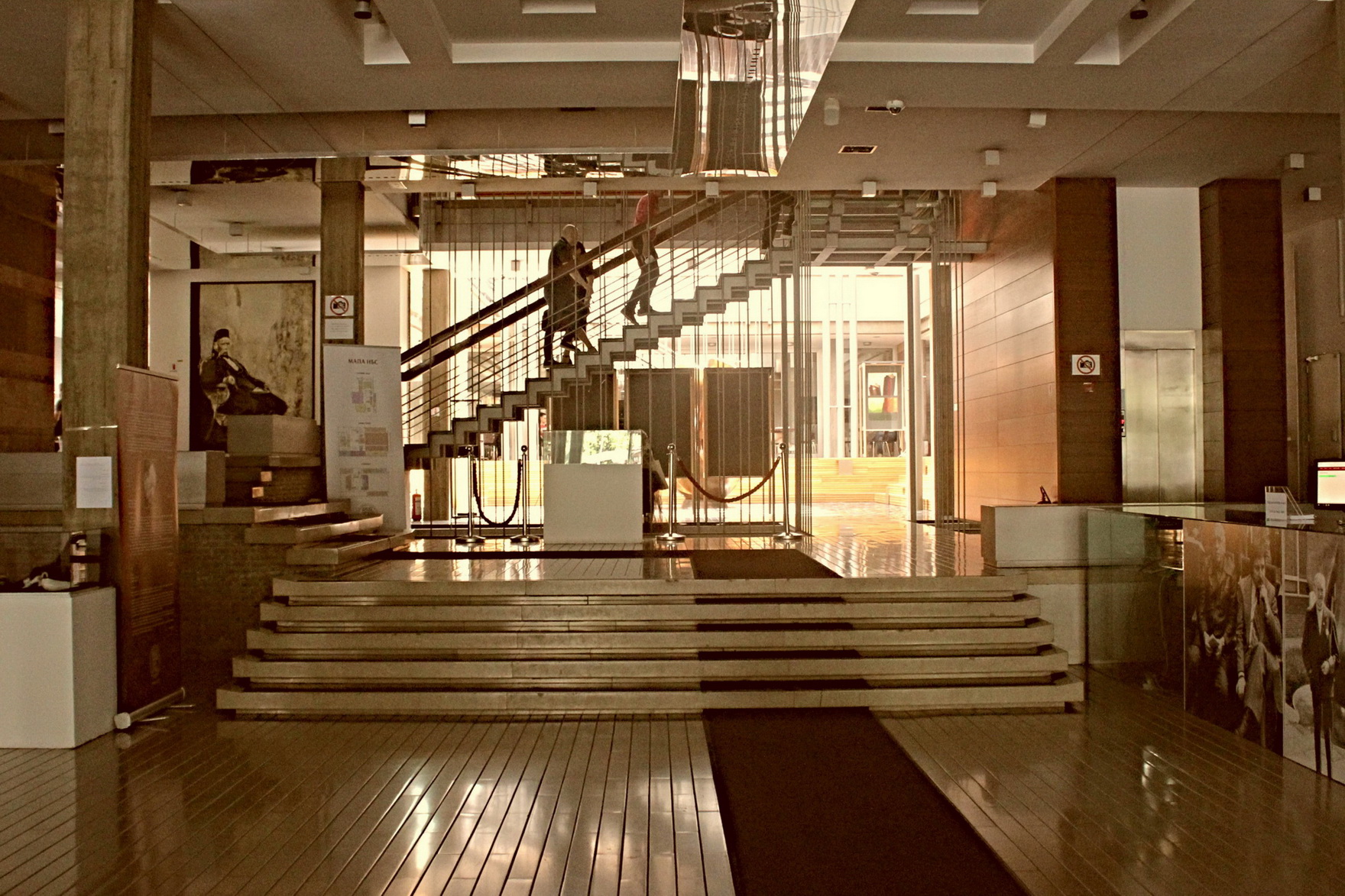
II Belgrade Grammar school
II Belgrade grammar school (today's Philological Grammar School) is one of the oldest Belgrade grammar schools. It was founded in 1870. Since its creation, it has changed names and locations, but it is known that the beginning of its work is related to the Palulula school (today Elementary school Vuk Stefanović Karadžić). Since 1897, it has been located in a building on Kralja Aleksandra Boulevard, on the lot of merchant Jovan Panđel, in a building adapted for the needs of the school. It was located near the Batal mosque, which was demolished at the end of the 19th century.
The old gymnasium building at the Batal mosque
II Belgrade grammar school, located in Peonkareva Street (today's Makedonska) was built in 1910. During the April bombing, it was hit by bombs and severely damaged. Only the facade of the building remained, while the interior was completely destroyed. 17 military personnel, a school janitor and three students died in the building. The gymnasium had a total of 600 students that school year, who continued their education in other locations in the city from the fall of 1941. After the Second World War, the gymnasium shared its premises with other Belgrade gymnasiums, until the old building was repaired in 1947. However, in 1960, the Municipality of the City of Belgrade decided to demolish the building of the II Belgrade grammar school, in order to built a building for the Politika newspaper on the site.
In 1968, a new Politika building was built on the site of the former II Belgrade building according to the project of architects Uglješa Bogunović and Slobodan Janjić. The 17-story skyscraper project was in line with the modern international architectural style.
